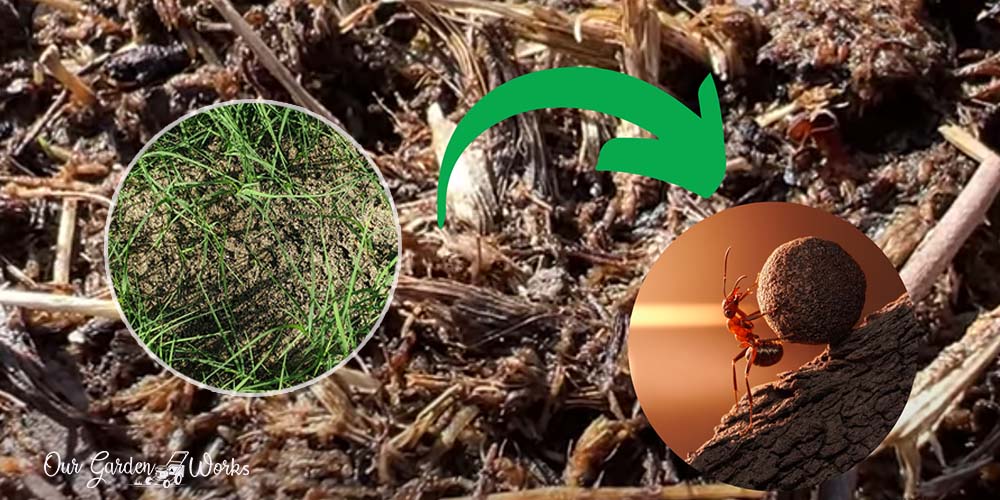Ants can be a friend or foes in every garden. Their presence in your yard means you have a healthy ecosystem since they play an important ecological purpose.
However, If you see piled up grass seeds, bare patches of lawn, and caught-in-the-act seed theft, you’ll surely be asking: do ants eat grass seeds or use them to build their home?
As someone who wants to see a lush green lawn, it can be frustrating to see these tiny creatures transport the seeds to their nests.
In this post, we will share what ants do to lawns and how you can prevent them from ruining your dream lush lawn.
Do Ants Eat Grass Seeds?
Ants consume grass seeds due to their starchy nature. If there is a lack of other food sources in the garden, ants will target the grass seeds in your yard, especially those close to their nest.
If you look closely, you will see the worker ants carrying the seeds that are bigger than them and bringing them back to their nest for food storage.
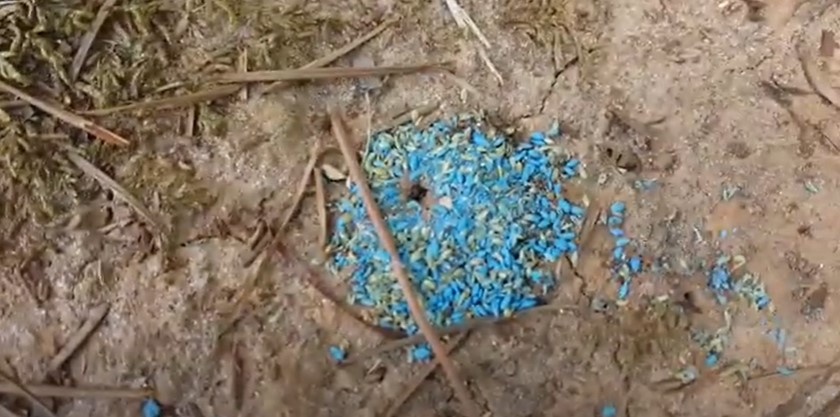
In some cases, ants carry the seeds close to the nest entrances and pile them up into a mound of seeds. Due to these activities, homeowners are often disappointed to see bare patches on the lawn and a chunk of grass growing on the nests.
Small colonies of ants don’t cause great harm when seeding your lawn. The ratio of seeds is more than the ants can even try to carry.
However, you’ll need to address your ant situation if they’re building unsightly mounds all over the lawn and big bald patches.
5 Things Ants Do To Lawns
Ants favor lawns because the soil is full of moisture. They can hide from the predators through the thick blades of grass and sneak their way to access food sources like dead insects and animals.
Ants are beneficial in terms of breaking down organic materials but can also be destructive invaders of the lawn.
According to ant enthusiast Ants Canada, some ant colonies are invasive and can do more harm to your lawn than others. These include:
The ant colonies mentioned above kill native ants like weaver ants and other native wildlife beneficial to your lawn. They are also the ones that cause painful stings and are notorious for growing a big colony in days.
Other than invading the nice ants on your lawn, they can also do the following:
Loosen The Soil
Before ants build a visible mound, they start burrowing their nest underground where they keep the queen chambers.
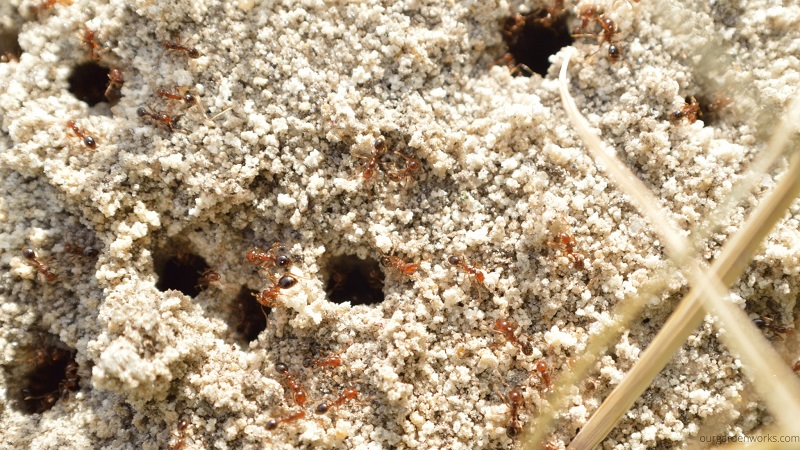
As they slowly dig tunnels, they loosen up the soil which affects the root health of your grass and causes yellow and brown spots on the lawn.
If the roots are not properly attached to the soil, they will not receive the right amount of moisture and nutrients that it needs to grow.
Steal The Seeds
Ants are not as sneaky in collecting grass seeds as they aim to be. Kids and homeowners often find them fascinating to see them carrying a seed bigger than their body across the lawn.

Aside from being an obvious food source to ants, there’s a science behind the seed-stealing activities of these tiny insects.
Ants are capable of seed dispersal in the wild like birds. Some plants have an intimate relationship with seeds where they produce a specific oil called an elaiosome that attracts ants to carry them to their nest. Ants will then use the seeds to feed their larvae.
The seeds will be discarded unharmed and left to germinate in the ground. This ant and plant connection is called Myrmecochory.
If you have tiny seed thefts on your lawn, you’ll notice that a bunch of grass seedlings is sprouting from their nest.
In terms of nature preservation, the seed dispersal of ants is helpful to increase the fauna in a garden. However, if you’re aiming to grow a uniformly green lawn, ants’ way of seed dispersal will be an obvious problem.
Feed On Dead Insects And Animals
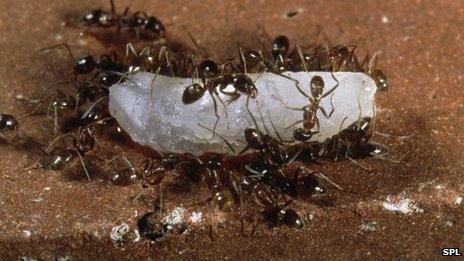
Ants not only feed on sweet and sugary stuff but also on carcasses of insects that are present on your lawn.
They are beneficial in breaking them down to pieces for the plants and soil microorganisms to consume. Their part in the decomposition of dead organisms is among the benefits of having ants around your yard.
Nurture Plant-Damaging Pests
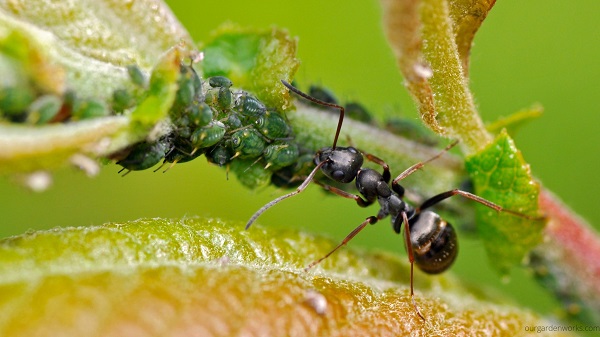
Many gardeners assume that ants are among the pests that feed on their plants.
However, they only feed off the honeydew that aphids and mealybugs get from plants. The presence of ants in plants suggests that there is a possible aphid infestation.
The toxic relationship between aphids and ants can cause great harm for your crops, especially vegetable gardens. Though ants and aphids don’t feed on grass, they can harbor and nurture plant-damaging insects in your yard.
Build Unsightly Mounds
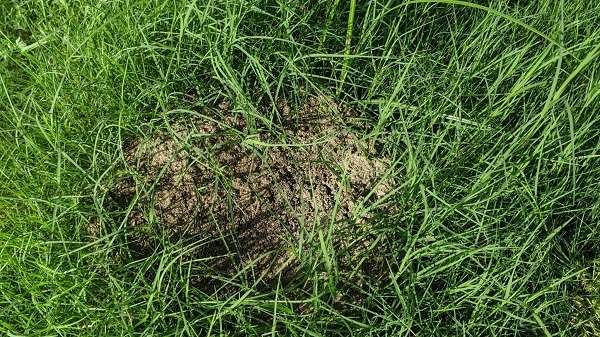
Ant mounds are probably the most unsightly damage that ants make to a lawn, on top of making bald, yellow, and brown patches of grass. These mounds are proof that you are dealing with a big ant colony that can make more than one mound.
In worse cases, these mounds will grow in size until it’s big enough to look like a small hill.
It’s amazing to see that these tiny insects can make a big nest but it can also be troublesome for your garden’s ecosystem and the uniformity of lawn grass.
How To Prevent Ants From Stealing or Moving The Seeds
If the number of ant colonies on your lawn is becoming troubling, here are some ways you can deal with them and help your grass thrive:
Pour boiling water repeatedly on the mounds
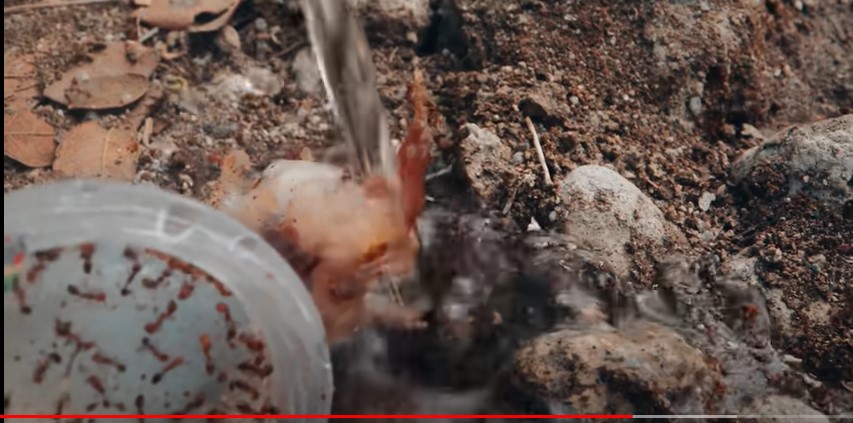
Most ant enthusiasts believe that the most efficient and non-toxic way to manage ants on lawns is by pouring boiling water.
The water should be at a boiling temperature and must be continuously poured on the nest until it reaches the queen. The target should be the queen ant because she is responsible for laying the eggs.
Once the queen ant is dead, the ant population will soon decline. Repeat the same method on other parts of your lawn where you notice ant traffic.
Once done, replenish the grass seeds in the bald spots of your lawn and water them well.
Top Dress With Peat Moss
Some gardeners often notice that ants get the seeds on the surface and not the ones that are lightly buried in the soil.
So, to keep the tiny thieves from stealing the seeds, you may lightly top dress the grass seeds with peat moss and water them. Though ants can easily dig the seeds, it will slow them down in storing them.
Apply Pesticides
If all else fails, pesticides can become handy in managing the ants. Professional growers often use pesticides to problematic ant problems in lawns which also helps control other pests like sod webworms.
Here are the insecticides that most homeowners and professional landscape service providers use:
(1) Bifenthrin-based pesticides: Bifenthrin is a synthetic insecticide used to treat common pests in lawns. It is applied as a powder using a spreader and will be watered on the lawn wherein ants die through contact or ingestion.
Pesticides with the active ingredient bifenthrin can help manage:
- Annual bluegrass weevil.
- Billbugs.
- Leafhoppers.
- Mealybugs.
- Ants.
- Centipedes.
- Chinch bugs.
- Fleas.
- Fire ants.
- Mole cricket.
- Ticks.
- Other lawn pests.
The brands used by professionals are as follows:
(2) Ant powders/dust: Some gardeners pour ant powders on the entrances of the ant’s nest to prevent them from stealing the seeds.
Some people even mix the ant powder with the seeds since they don’t want the ants to take any chances.
If you’re going to mix the ant powder with the seeds, make sure that you are wearing protective clothing to prevent possible skin and eye irritation.
The most recommended ant powder for persistent ant infestation is Garden Tech Sevin Dust.
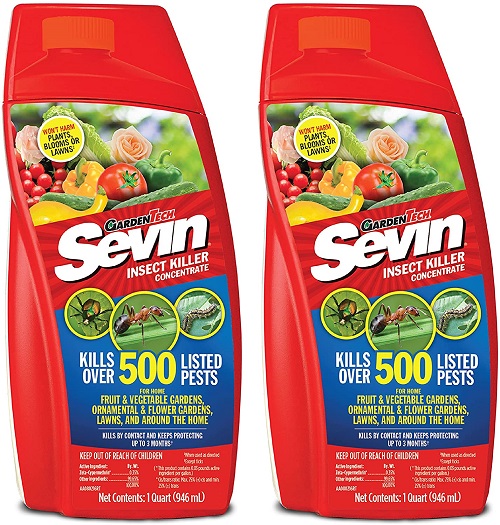
(3) Diatomaceous Earth: Diatomaceous Earth is the best option for gardeners who want a more organic approach to managing ant infestations. It is a pulverized form of sedimentary rock that is too abrasive to the exoskeleton of ants which causes them to dry out.
Here are the best brands of DE that homeowners use to kill common lawn pests:
- Earthborn Elements Diatomaceous Earth (1 Gallon)
- Safer Brand OMRI Listed Diatomaceous Earth
- Diatomaceous Earth Food Grade
Frequently Asked Questions (FAQs)
Will ants eat the seeds I plant?
Yes, but they will only bring it to their nest to feed the larvae but will not cause too much damage to the seeds.
However, the damage they can cause depends on their population. A small colony doesn’t cause an impact on newly seeded lawns unless they are the fast-growing type like fire ants.
Do ants like to eat grass?
No, the grass is not starchy enough for ants to devour and enjoy. Instead, they feed on grass seeds and bring them to their nests to feed their larvae.
Ants prefer to build nests and live in lawns because the soil is moist enough for them to create tunnels and roam around.
Are ants bad for lawns?
Ants are beneficial to the local ecosystem on your lawn. They have mutual relationships with plants that help disperse seeds and aid in plant propagation.
They also help speed up the breakdown of dead insects, animals, and other organic materials and help soil microorganisms to make nutrients readily available to plants.
Do ants eat grass seeds and damage lawns?
Yes, if there are multiple colonies in a lawn, they can cause unsightly lawn damage like ant mounds, yellow or brown patches, bald spots, and holes in the ground.
Final Thoughts
We hope that this post helped shed some light on why ants are stealing your grass seeds. So, when your curious kids ask you the question, do ants eat grass seeds, you’ll know how to answer them with a science-backed explanation.
Ants can be small but in huge populations, they can be invasive and damaging. We urge you to opt for natural means to manage ants on your lawn and use insecticides as a last resort.
Also, we hope that the presence of a few harmless ant colonies will not make you think of them as a threat.
After all, ants are among the most diligent and resilient members of the ecosystem. We hope you don’t judge the beneficial ants for what the invasive and damaging ants do.
